
The connection between language and cuisine is very close, profound, and rich in nuances: just think of the many proverbs we have linked to the world of food. Sometimes, however, certain names can be misleading, conjuring up preparations that don't correspond to what you expect to find on the plate: this applies to tourists visiting other countries, but often also to us Americans traveling abroad. What causes this phenomenon? The factors that have influenced it over the years are numerous: translation errors from one language to another, misinformation spread by films and TV series, false attributions, names that are not strictly related to the actual ingredients of the dish. What are the most misleading dishes for tourists? Here are the recipes that create the most confusion.
1. Pepperoni Pizza, Without Peppers (Peperoni)

Let's start with a great classic, the "pepperoni" pizza. It's one of the recipes that creates the most confusion in both senses, that is, for Italians traveling to the United States and for Americans coming to visit Italy: the "pepperoni pizza" is one of the most beloved American versions of pizza, the most widespread and ordered, the one we've seen in dozens of films. To an Italian's ears, it automatically means pizza with peppers, but in reality the term "pepperoni" refers to a particular spicy salami of Italian-American origin, namely the "pepper", invented in the USA between the late nineteenth and early twentieth centuries. It has a fine grind similar to that of the Milano salami, a little spicy and lightly smoky like the Neapolitan sausage, but it is certainly a cured meat and not a vegetable. The misunderstanding, in this case, is linguistic: pepe is “pepper” in English, hence "pepperoni sausage", which is precisely the name of the salami in question, which later became the identifying name of the type of pizza that uses it as an ingredient.
2. "Latte" for Americans Vs. "Latte" For Italians

Another term that creates excessive confusion is "latte," which means two very different things to Americans and Italians. If you're in the United States and order a "latte," you'll find yourself with a drink halfway between cappuccino and caffe latte, a combination of espresso and hot milk, but with a larger amount of milk than a cappuccino and a much thinner foam. In Italy, however, if you order a latte at a café, it's simply hot milk, at most slightly milky. In fact, the problem is also the reverse: Americans in Italy order the "latte" they know and end up drinking something completely different.
3. The Legendary Fettuccine Alfredo
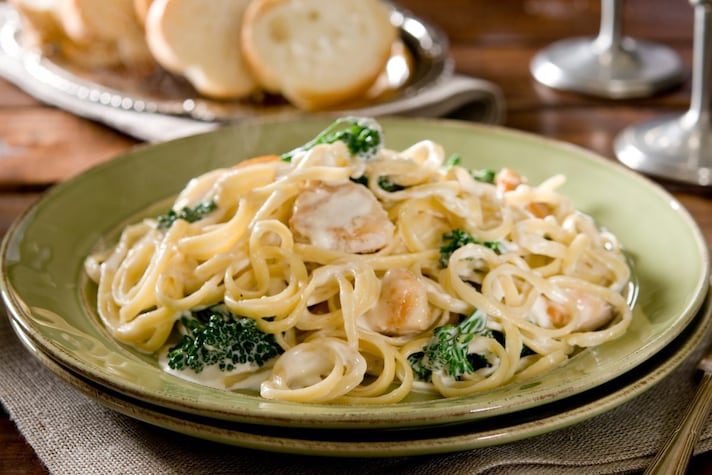
Fettuccine Alfredo is one of the most confusing recipes for Americans visiting Italy: it's a very popular dish in the US, where the general belief is that it's Italian—it's served in every restaurant, even vaguely Italian-American, not to mention the ready-made sauces at the grocery store—and they expect to find it in Italy too. We know it's not as common there, but the story is actually more convoluted than you might think, and Americans aren't wrong, at least not entirely. Alfredo sauce is truly a recipe of Italian origin, born in Rome in the early 20th century: it seems that restaurateur Alfredo Di Lelio created it to help his wife regain strength after her pregnancy, and it consisted of just three simple ingredients: pasta, butter, and Parmesan cheese, all mixed together to create a creamy sauce. The dish later became popular among customers at his restaurant, "Ristorante Alfredo," even attracting celebrities and tourists from around the world. The dish gained great fame in the United States during the 20th century, where it became “fettuccine Alfredo” but where the recipe was also “distorted” into a much more substantial version to which everything from vegetables to diced chicken was added.
4. French Fries Are Not French

In this case, it's more of a historical curiosity than a truly misleading dish, especially since, let's face it, French fries are practically everywhere these days. The only problem is that the English name by which they're known internationally might cause confusion: they're actually called "French fries". But that doesn't mean you should expect amazing fries or grand celebrations of the recipe if you go to France. French fries, in fact, aren't French but are a Belgian specialty, even if the French don't entirely agree with this version of history. What does France have to do with it? There are two theories. According to the first version, North American soldiers stationed in the Wallonia region covered this snack in fried potatoes, and since the dominant language in southern Belgium is French, the tasty dish was nicknamed "French fries." Another theory claims that the term "French" was used to indicate the style of cutting potatoes "à la française."
5. "Parmesan" Is Never an Italian Parmigiana
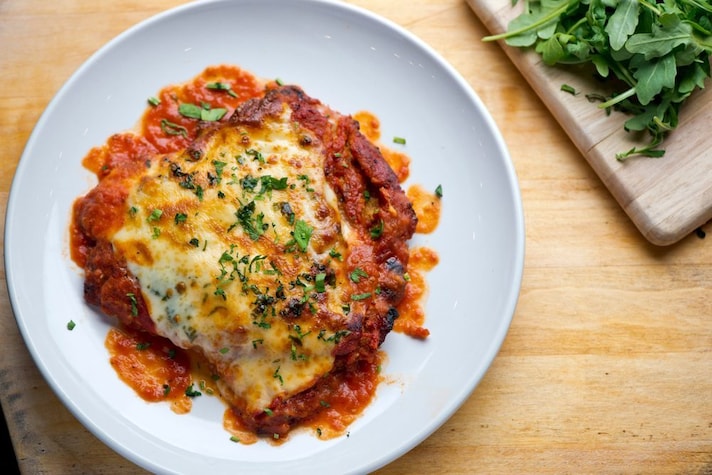
Abroad, especially in Anglo-Saxon countries, the term "parmigiana" is often associated with dishes like chicken parmesan or eggplant parmesan, which feature breaded meat or vegetables, fried, and then baked with tomato sauce and melted cheese. These versions originated as adaptations of Italian cuisine by immigrant communities, who reinterpreted ingredients and recipes based on local availability and tastes. Although chicken parmesan is not a traditional Italian dish, and "parmigiana" in Italy is typically made with eggplant (without meat and with neat layers of vegetables, sauce, and cheese), these international variations represent a distinct form of Italian-American cuisine. They are not authentic copies, but cultural evolutions that have found their own identity and popularity, and which tell a different story, distinct yet still tied to Italian roots.
6. "Pasta Primavera" Doesn't Actually Exist

The name "pasta primavera" sounds Italian and fresh, and often misleads Italian tourists who encounter it in American or British restaurants. In reality, it's a dish born in New York in the 1970s, consisting of pasta with sautéed vegetables, sometimes with the addition of cream or cheese. In Italy, there's no codified dish with this name: main pasta dishes are certainly prepared with spring vegetables, but they're simply called "pasta with vegetables" or specify the ingredients, such as "pasta with zucchini and mint." "Primavera" in this context is a poetic license born abroad, which perhaps has even been borrowed by some Italians: if you order it, however, you might find ingredients very different from what you expect.
7. The "Florentine" is Not Always a T-Bone Steak

For a foreign tourist reading "Florentine steak" on an international menu, the reference is often vague. Sometimes a standard steak with spinach is served (a dish known in France as "à la Florentine," meaning "with spinach"), which is completely different from the true Florentine steak: a thick cut of beef or Chianina beef, grilled, bone-in, and rare. The term "Florentine" in the English-speaking world can refer to very different dishes and often has nothing to do with Florence or Tuscan tradition. In the English-speaking world, the adjective is not used strictly and can refer to dishes with spinach, as in the cases of "Eggs Florentine" or "Chicken Florentine," where "à la Florentine" simply means "with spinach," borrowed from French cuisine.
8. Italian-Style Garlic Bread? Never Been a Thing in Italy

Garlic bread is one of the most common side dishes in pseudo-Italian restaurants around the world, especially in the US and the UK. Bread, garlic, butter, and parsley: it's often served as an appetizer. But the so-called "garlic bread" doesn't exist in this form in Italian tradition. Some vaguely connect the concept to bruschetta, but they are two completely different things in terms of ingredients, preparation, and context. Garlic bread is an Italian-American invention that has taken a unique path.
9. The Inevitable Marinara Sauce
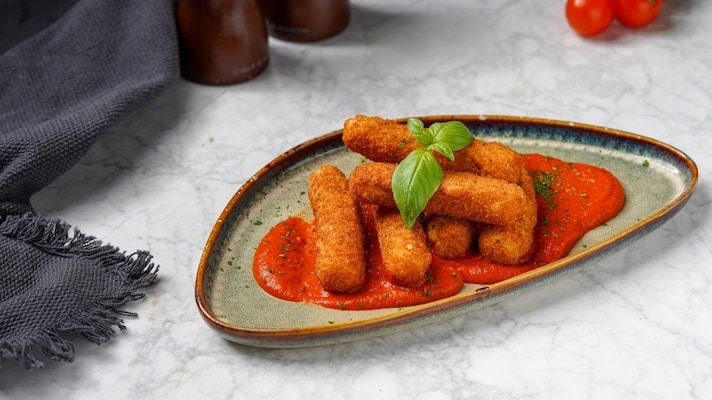
We return to the US to warn you about another dish that might confuse you: marinara sauce has nothing to do with the sauce used on the pizza of the same name. In this case, it's an Italian -American sauce made with celery, onion, carrots, lots of garlic, and a blend of aromatic herbs that's used to season just about anything in the United States, except pizza, as the name might suggest. In particular, it's used for another dish that sends Italians into a tailspin: chicken parmigiana, a decidedly bizarre variation on eggplant parmigiana in which the eggplant is replaced with fried chicken, topped with cheese and marinara sauce, and then served with plain spaghetti or used directly as a pasta sauce.
10. The Genovese is Actually From Naples
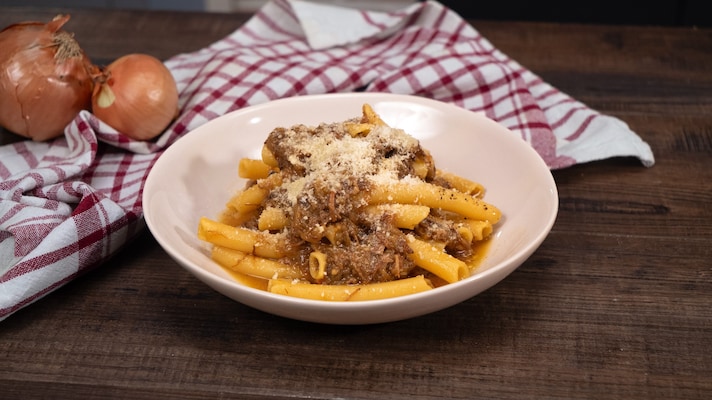
A creamy, smooth, and enveloping sauce, a white pasta sauce made with onions and beef simmered over a long heat until it becomes a creamy, fragrant sauce: Genovese sauce is one of the most delicious in Italian tradition, but don't expect to find it if you go to Genoa. Genovese is one of Naples' most famous dishes, one of the city's most cherished treasures, so much so that outside of Campania, very few people know the delicacy of this ragù. There are several legends surrounding its misleading name: one of the most widespread holds that it probably actually originated in Genoa and was brought to Naples by a Ligurian chef or sailor, becoming iconic in the Campanian city and practically falling into disuse in Liguria; another holds that it was "copied" by Swiss chefs present at the French noble courts, linking the name of the pasta to the "ginevrina" (a type of pasta made with genoese).
11. And What About Sponge Cake? It's From Genoa!

If there's anything truly Genoese, it's pan di Spagna (sponge cake). The name is decidedly misleading and might lead you to think this soft cake base is an Iberian invention, but it's 100% Italian. Its unusual name is linked to a historical event: according to tradition, in the mid-18th century, a chef traveling to Spain with the Genoese ambassador presented this light, fluffy cake for the first time at a royal banquet in Madrid. It was a huge hit and was named in honor of the royals.
12. Russian Salad is Not Entirely Russian
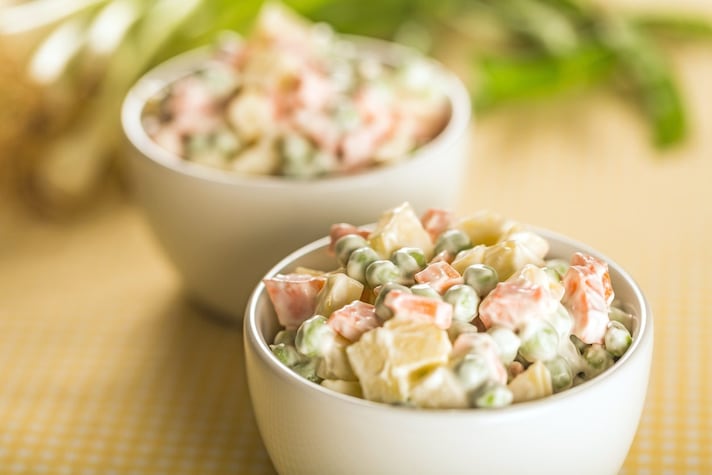
Let's dispel a big myth: Russian salad isn't a typical Russian dish, nor is it even Russian in origin, at least not entirely. In reality, the history of this dish, with its myriad variations —virtually every European nation prepares it differently—is extremely tangled and exists in several versions. One of the most widely accepted actually links this recipe to Russia, except that its inventor was Belgian, a chef named Lucien Olivier who, in the mid-19th century, ran a famous restaurant in Moscow called the "Hermitage."
Olivier's recipe has nothing to do with Russian salad as we know it: it apparently was prepared with over 100 ingredients, but the combination was a top secret, and the chef took it to his grave. Today, a sort of Russian salad exists in Russia, but it's called Olivier salad and is very different from the equally iconic recipe that we know of, which has nothing to do with Chef Olivier's original Russian salad: it apparently took the name "Russian" from rusa, a Piedmontese dialect term indicating the color given by the beets used in the 19th-century recipe created at the court of Savoy. Essentially, therefore, there are multiple versions of Russian salad, one of which is actually Russian, but the one we know has nothing to do with the nation of Russia.
13. Carbonade Has Nothing to Do With Carbonara
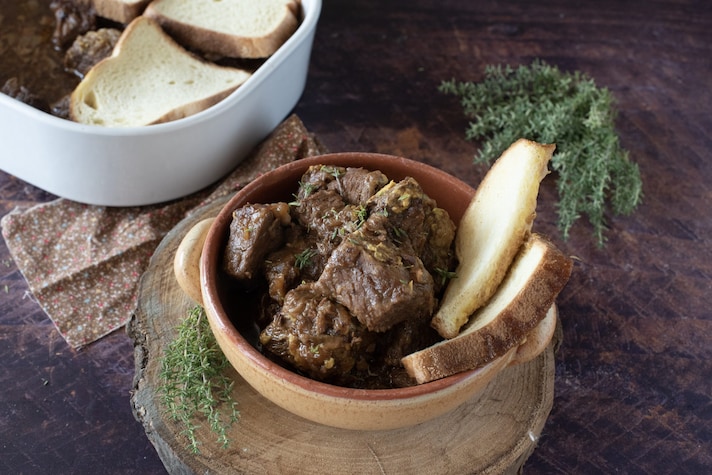
Anyone who sees "carbonade" on an international menu might think of a variation on pasta carbonara, perhaps with a few creative twists. In reality, carbonade flamande (or carbonnade) is a beef stew cooked in beer typical of Belgium and northern France, completely different from the Italian carbonara. The name derives from the slow, traditional cooking method, often associated with "carbone" or tavern dishes. The risk of confusion is high, because the term "carbonade" closely resembles "carbonara," but the two dishes have nothing in common, neither in terms of ingredients nor origin. It's a perfect example of how linguistic similarity can lead to gastronomic misunderstandings.
14. English "Pudding" Isn't an Actual Pudding

For anyone, the word "pudding" immediately brings to mind a dessert, similar to our pudding. In England, however, the term has a much broader meaning and can refer to both sweet and savory dishes. The very famous "Yorkshire pudding," for example, is not a dessert, but a traditional English savory side dish, originally from Yorkshire, consisting of a batter made from eggs, milk, and flour, baked until soft and fragrant with a characteristic hole in the center; or "black pudding," which is nothing more than a blood sausage. In short, if you order a pudding in England, you might find something very different from a dessert.
;Resize,width=767;)
